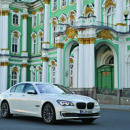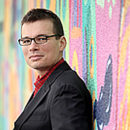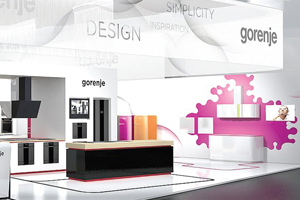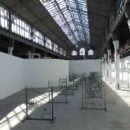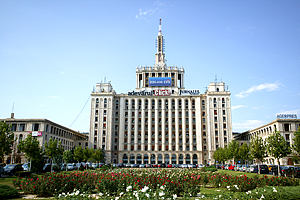
Stalinist architecture in Bucharest
The period following the forced abdication of King Mihai in 1947 and until the death of Stalin in 1953 saw Romania embark on a building spree of buildings designed to follow a Soviet ideological blue print. A phrase was coined, ‘Socialist Realism’ and was described by the slogan ‘Architecture and art in general need to be socialist in content and national in form’.
The styles are reminiscent of Neo-Classicism, flattering those episodes in the architectural history that were on the ‘correct’ side of ideology such as Greek Classicism, the Renaissance, and the Russian Synthesis of the 17th and 18th centuries, as well as Russian Pseudo-Baroque. The movement required dimensions to be monumental, to support the superiority of the Bolshevik regime. Buildings were planned to be placed in a context that would erase over time any traces of previous urban history.
CASA SCâNTEII
The location of Casa Scânteii, now ‘The House of Press’ is not accidental being situated on a boulevard named Pavel Kiselyov, after a former Russian administrator of Bucharest. Casa Scanteii, Scanteia being the name of the official daily newspaper of the Romanian Communist Party, thus became the local version of a Stadkrone, namely a representative building for the new regime. At first, between 1948-1949, the headquarters of the communist propaganda machine was designed in the interwar manner of the purged Classicism. Nevertheless, having taken the plan to Moscow, the team of architects comprising H. Maicu, N. Bădescu, L. Staadecker and M. Alifanti met with rejection and was given a different plan instead. The proposed building was intended to be a replica of the seven post-war buildings erected in Moscow, epitomized by the Lomonosov University building.
Another similar building was allegedly a gift from Stalin to the Polish people. This building survives still in the centre of Warsaw, the centre of which was destroyed by the Nazi bombings of 1944; it was rebuilt after 1945 in the same Soviet representative style of the new regime paralleling the Palace of Culture. The Bucharest replica, however, built in 1951 is significantly lower in height than the Moscow replicas albeit, it needs to be said, it bares a striking resemblance insofar as its planimetry and typology are concerned. A part of this decoration is of folk inspiration, namely national in form, done as a gesture of subservient recognition to the pre-eminence of the worldwide capital of communism. It seems that the hippodrome, a centre of the bourgeois and aristocratic social life before the war, was demolished in order to erect the Spark Building in Bucharest and a series of bonds, never to be redeemed, were issued. Archive footage with the construction using patriotic labour of the building, namely compulsory unpaid labour, survives. Fragments of this footage have been incorporated into my film ‘Architecture and Power’ made in 1992 and directed by Nicolae Mărgineanu.
The building is crowned by, to quote Grigore Ionescu, an aedicule shaped like a tower. There is a story behind the way the Muscovite building and their respective replicas in Bucharest and Warsaw finish on top where the future is heralded. Despite the historical iteration, the top, ie. the future, couldn’t under any circumstance draw inspiration from the traditional closing method of historical buildings, be they local Russian ones. Therefore, nothing like a fleché, a vault or a cupola could be used! Since there are not that many ways one can finish a building’s upper section, the architects had to create new ways to suggest the era’s idea of the future. They took inspiration from the example of American Art Deco of contemporary skyscrapers such as the Empire State or Crysler buildings in New York, while others, like Tatlin’s Monument of the Third Internationale, incorporated solutions from Russian Constructivism.
In the building’s defence, one needs to mention that it has a vast and very well controlled perspective at the end of the Kiselyov axis, and, therefore, an elegant urban presence in an area that was at the time beyond the city limits. Moreover, it was very well built in such a way that it has stood relatively intact until today despite the fact that it has never been restored. In 1999 when the building was still housing the Ministry of Culture, the then minister issued an order for the communist stone stars that decorated the house to be removed in a manner reminiscent of the way one pokes out with a penknife the eyes of a political opponent from electoral posters. While in Bucharest the flagship building of Stalinism in Romania was being disfigured, in Berlin, the Stalin/Karl Marx Alee was being restored with details of Meissen porcelain, details superior to the original, and the democratic character of the East- Berlin urban intervention was, I was told, being appreciated.
THE OPERA HOUSE
Full article


